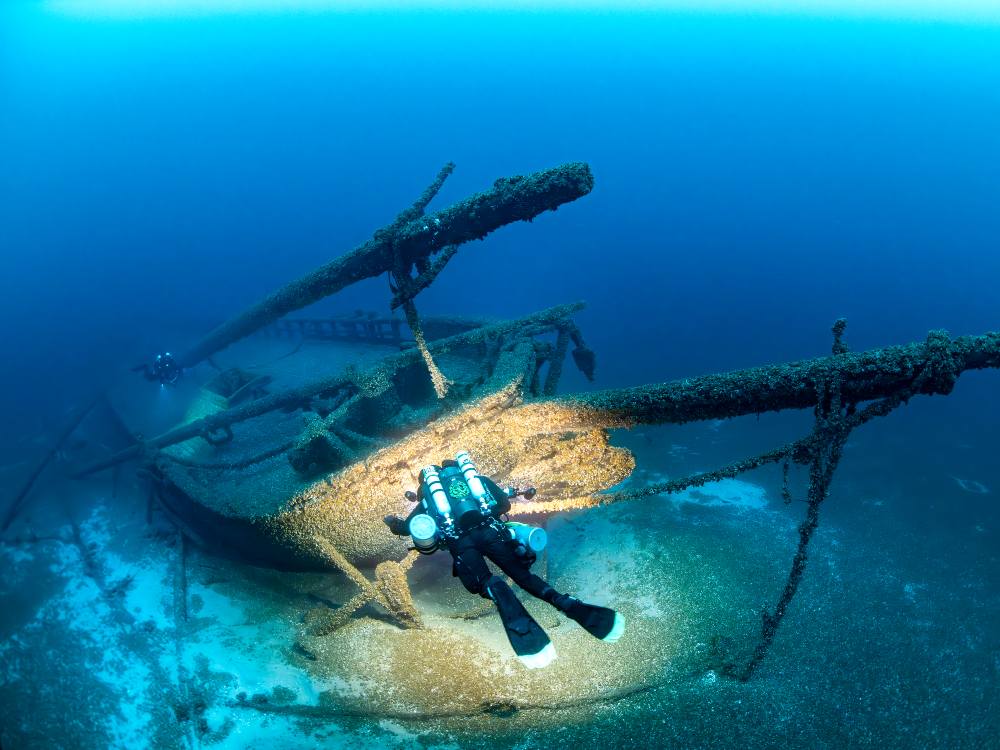Shipwrecks: New Study Opens Window to Cultural Past in Great Lakes Sanctuary
Posted
Last Updated
While shipwrecks are often the primary focus of maritime heritage preservation in America’s Great Lakes national marine sanctuaries, a recent two-part maritime cultural landscape study of the 962-square-mile Wisconsin Shipwreck Coast National Marine Sanctuary reveals that shipwrecks only tell part of the story of human connections to the natural environment in this region. There were many harbors, shipyards, and lumber mills associated with Euro-American fisheries tied to sanctuary waters, and these inland seas were essential for Indigenous peoples for millennia before European contact. The report highlights the need for future Tribal cultural landscape studies by Indigenous peoples in their own voices.
“People have used these waters for over 10,000 years,” said Russ Green, superintendent of Wisconsin Shipwreck Coast National Marine Sanctuary. “Historic shipwrecks happen to be the most visible of the sanctuary’s archaeological features, but they represent just a fraction of its history and cultural significance. We hope this report can be a starting point to working in partnership with local Indigenous peoples in future cultural studies.”
What is a Maritime Cultural Landscape?
A maritime cultural landscape study is like a special investigation that looks at the connection between people and the marine environment over time. It explores how humans have interacted with the ocean, rivers, and other waterways, and how these interactions have shaped cultures and communities. This study goes beyond just the physical structures like boats or ports; it also considers stories, traditions, and communities related to waterways.
Researchers in maritime cultural landscape studies dig into historical records, oral traditions, and archaeological discoveries to piece together a detailed picture of how people have used and lived by the water. They might look at old maps, shipwrecks, fishing practices, folklore, and written and oral histories to understand the deep ties between human societies and the maritime environment.
read more at santuaries.noaa.gov.

